Conference Reports We have made available several reports from conferences where we have participated. Papers are presented in reverse chronological order. These PDF files require the Adobe Acrobat Reader. | |
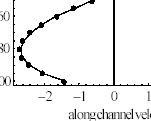 |
ECM7Paper.pdf 160 KB - 11/12/03 K.M. Dresback, C.A. Blain, R.L. Kolar. "A Preliminary Look at Methods to Compute Baroclinic Pressure Gradients in FE Models." Estuarine and Coastal Modeling, Proceedings of the Seventh International Conference, M.L. Spaulding and K. Bedford (eds.), American Society of Civil Engineers, pp. 103-119, 2002. ABSTRACT: "In shelf regions with steep bathymetry in the presence of density gradients, the computation of the baroclinic pressure gradient term in 3D shallow water models may either become unstable or physically unrealistic. This manuscript examines four algorithms to compute the baroclinic pressure gradient term in finite element models. Two common systems for discretizing the vertical are sigma or z-level coordinates. In turn, permutations of these two coordinate systems serve as the basis for the four different algorithms examined herein. All are implemented in the context of the finite element hydrodynamic model, ADCIRC. Several density gradients that vary horizontally and vertically, with the pycnocline occurring at different depths, are used to evaluate the methods in a three-dimensional box grid with variable bathymetry. Initial testing, the subject of this work, focuses on model behavior for simplified problem with known analytic solutions. Long term goals for this study (the subject of subsequent papers) are three-fold: 1) to determine the vertical node placement algorithm that produces the most stable and physically realistic results; 2) to determine the interplay of vertical and horizontal resolution (and bathymetry and density profile), while considering simulation time; and 3) to produce accurate 3D flow fields and baroclinic pressure gradients. Outcomes from the study will be used to direct on-going modeling research in the Mississippi Sound." |
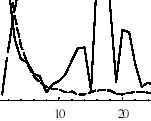 |
CMWRXIVPaper.pdf 60 KB - 11/12/03 K.M. Dresback, R.L. Kolar, J.C. Dietrich. "Impact of the Form of the Momentum Equation on Shallow Water Models Based on the Generalized Wave Continuity Equation." Proceedings of CMWR XIV Volume 2: Computational Methods, Surface Water Systems and Hydrology, et al. (eds.), pp. 1573-1580, 2002. ABSTRACT: "A number of finite-element based shallow water models use the GWC (generalized wave continuity) algorithm, first introduced by Lynch and Gray in 1979 [1], to suppress short wave noise without artificial or numerical damping. Nearly all of these, including the ADCIRC (ADvanced 3D CIRCulation model developed by Westerink and Luettich, see [2]) model used in our research, utilize the non-conservative form of the momentum equation to obtain the velocity field. However, as early as 1990, it was discovered that the inconsistent treatment of the advective terms between the GWC equation (which uses the conservative form of the momentum equation in its formulation) and the non-conservative momentum (NCM) equation was causing instabilities. .... Results from the 1D experiments indicate the following: global mass balance improves up to two orders of magnitude, depending on the domain; local mass balance greatly improves in areas where steep bathymetry gradients occur; when combined with a predictor-corrector time-marching algorithm, stability increases by at least a factor of two (for a given level of mass balance error); and the form of the momentum equation does not cause a significant change in temporal or spatial accuracy when evaluating the two different time-marching algorithms." |
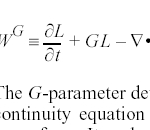 |
CMWRXIIIPaper1.pdf 194 KB - 05/17/04 R.L. Kolar, J.J. Westerink. "A look back at 20 years of GWC-based shallow water models." Proceedings of CMWR XIII Volume 2: Computational Methods, Surface Water Systems and Hydrology, L.R. Bentley et al (eds.), pp. 899-906, 2000. ABSTRACT: "Wave continuity equation models were introduced in 1979 by Lynch and Gray as a means to suppress spurious oscillations that appeared in finite element models based on the primitive equations. Since then, the basic algorithm has been studied and tested extensively; with subsequent modifications and extensions, it has proven to be a computationally efficient, reliable algorithm for predicting the hydrodynamic behavior of coastal and oceanic waters. Modifications over the last 20 years can be broken into two broad, but inter-related classes: 1) changes to the numerical algorithm, e.g., implicit time-marching or higher order elements; 2) incorporating more of the underlying physics into the mathematical formulation, e.g., baroclinic forcing or wetting and drying of near-shore elements. This manuscript summarizes the algorithmís evolution and highlights some its strengths as well as its shortcomings. It closes with some observations about the future of shallow water algorithms based on the generalized wave continuity (GWC) equation." |
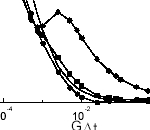 |
CMWRXIIIPaper2.pdf 171 KB - 05/17/04 A. Aldama, A. Aguilar, R. Kolar, J. Westerink. "A mass conservation analysis of the GWCE formulation." Proceedings of CMWR XIII Volume 2: Computational Methods, Surface Water Systems and Hydrology, L.R. Bentley et al (eds.), pp. 907-912, 2000. ABSTRACT: "The Generalized Wave Continuity Equation (GWCE) formulation of the shallow water equations was developed in order to eliminate spurious node-to-node oscillations that were observable in finite element formulations of the primitive equations. In the GWCE formulation, the continuity equation is substituted by a linear combination of the mass conservation the momentum equations, which is cast in wave-like form. The resulting equation is coupled with either the conservative or the nonconservative version of the momentum equation, thus closing the system. A number of investigators have noticed that the GWCE formulation exhibits mass conservation errors that are exacerbated when fine grids are employed. A Fourier analysis is performed on the GWCE formulation. It is shown that the said formulation is not consistent with the mass conservation principle, a fact that explains the observational evidence. Numerical tests that confirm the theoretical findings are also included." |
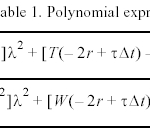 |
CMWRXIIIPaper3.pdf 300 KB - 05/17/04 C.M. Gossard, R.L. Kolar. "Phase behavior of a finite volume shallow water algorithm." Proceedings of CMWR XIII Volume 2: Computational Methods, Surface Water Systems and Hydrology, L.R. Bentley et al (eds.), pp. 921-928, 2000. ABSTRACT: "Two algorithms that have been used for shallow water simulations on unstructured meshes are the generalized wave continuity (GWC) algorithm and selective mass lumping (SLFE). Both produce noise free solutions; the former by its ability to propagate short wave components, and the latter by its ability to damp the short waves that are not propagated. Recently, the finite volume method, which has been used in gas dynamics, has emerged as the basis for another solution algorithm on unstructured meshes. Advantages include its ability to conserve mass at an element level and its ability to handle shocks in the solution (supercritical flow problems). Herein we demonstrate that the phase propagation behavior, as represented by Fourier analysis, of the low-order finite volume method is more similar to SLFE than GWC. On the other hand, with the proper choice of parameters, the dispersion relation for the finite volume method is more similar to the GWC than SLFE. Thus, the algorithm can uniquely resolve all frequencies with minimal damping." |
 |
CMWRXIIIPaper4.pdf 269 KB - 05/17/04 K.M. Dresback, R.L. Kolar. "An implicit time-marching algorithm for 2D GWC shallow water models." Proceedings of CMWR XIII Volume 2: Computational Methods, Surface Water Systems and Hydrology, L.R. Bentley et al (eds.), pp. 913-920, 2000. ABSTRACT: "Currently, wave equation models discretize the generalized wave continuity equation with a three-time-level scheme centered at k and the momentum equation with a two-time-level scheme centered at k + 1/2; nonlinear terms are evaluated explicitly. However in highly nonlinear applications, the algorithm becomes unstable for high Courant numbers. This paper examines the use of an implicit treatment of the nonlinear terms by using an iterative predictor-corrector algorithm. This algorithm was chosen because it is easy to implement in the framework of existing codes and because it minimizes the size of the matrices that must be stored and inverted. Two-dimensional results show over a eight-fold increase in the size of the stable time step, depending on grid resolution and domains. Sensitivity of stability to variations in the G parameter was examined; results show that the greatest increase in stability occurred when G / taumax = 1 to 10." |
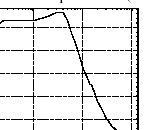 |
CMWRXIIPaper.pdf 156 KB - 05/17/04 R.L. Kolar, J.P. Looper, J.J. Westerink, W.G. Gray. "An improved time marching algorithm for GWC shallow water models." Computational Methods in Water Resources XII, Volume 2: Computational Methods in Surface and Groundwater Transport, Burganos et al (eds.), Computational Mechanics Publications, Southampton, UK, and Boston, USA, pp. 379-386, 1998. ABSTRACT: "Finite element solutions of the shallow water wave equations have found increasing use by researchers and practitioners in the modeling of oceans and coastal areas. Wave equation models successfully eliminate spurious oscillation modes without resorting to artificial or numerical damping. Typically, wave equation models integrate the continuity equation with a three-time-level scheme centered at k and the momentum equation with a two-time-level scheme centered at k + 1/2; nonlinear terms are evalutated explicitly. This allows for a computationally-efficient sequential solution procedure. However in highly nonlinear applications, the algorithm becomes unstable for high Courant numbers. In this work, we examine a predictor-corrector algorithm to improve the stability constraint. Two advantages of the predictor-corrector scheme over the alternative of simultaneous integration of the full nonlinear equations are: 1) they can be easily implemented within the framework of existing codes; and 2) they minimize the size of the matrices that must be stored and inverted. Results from an exhaustive series of one-dimensional experiments show that, depending on the bathymetry, grid resolution, and iteration procedure, we can see over a ten-fold increase in the size of the stable time step. Implementation of the most promising algorithm into the 2D/3D circulation model, Adcirc, is in progress." |
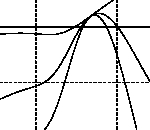 |
CMWRXIPaper.pdf 191 KB - 05/17/04 R.L. Kolar, J.J. Westerink, S.C. Hagen. "Truncation error analysis of shallow water models based on the generalized wave continuity equation." Computational Methods in Water Resources XI, Volume 2: Computational Methods in Surface Flow and Transport Problems, Aldama et al (eds.), Computational Mechanics Publications, Southampton, UK, and Boston, USA, pp. 215-222, 1996. ABSTRACT: "Finite element solution of the shallow water wave equations has found increasing use by researchers and practitioners in the modeling of oceans and coastal areas. Wave equation models successfully eliminate spurious oscillation modes without resorting to artificial or numerical damping. Since its introduction in 1979, the wave equation algorithm has been modified in a number of substantial ways. Three changes were introduced to improve the accuracy of the algorithm, especially with respect to mass balance errors and errors in the generation of nonlinear constituents: 1) the convective terms in the wave equation were reformulated so as to have the same form as the advective terms in the momentum equation; 2) the primitive continuity equation was weighted with a numerical parameter whose magnitude is larger than the bottom friction; 3) normal fluxes on the boundary were treated as natural conditions with the flux interpreted as external to the computational domain. In previous work, we have provided a theoretical basis for the second and the third modification. However, the first was developed in a purely heuristic manner. In the present work, we use truncation error analysis to provide a theoretical understanding of how this algorithmic change produces such a dramatic improvement in computed results. It is shown that when the form of the advective terms in the wave continuity and momentum equation is the same, global truncation error is reduced by 78% for the model problem. Truncation error analysis, as implemented herein, is a very general and powerful tool that will lead to further insights and improvements of the wave continuity algorithm." |
 |
CMWRXPaper.pdf 176 KB - 05/17/04 R.L. Kolar, W.G. Gray, J.J. Westerink. "Normal flow boundary conditions in shallow water models - influence on mass conservation and accuracy." Computational Methods in Water Resources X, Volume 2, Peters et al (eds.), Kluwer Academic Publishers, pp. 1081-1088, 1994. ABSTRACT: "Finite element solution of the shallow water wave equations has found increasing use by researchers and practitioners in the modeling of oceans and coastal areas. Wave equation models, most of which use equal-order interpolants for both the velocity and the surface elevation, successfully eliminate spurious oscillation modes without resorting to artificial or numerical damping. An important question for both primitive equation and wave equation models is the interpretation of boundary conditions. Analysis of the characteristics of the governing equations shows that a single condition at each boundary is sufficient. Yet there is not a consensus in the literature as to what the boundary condition must be or how it should be implemented in a finite element code. Traditionally (partly because of limited data) surface elevation is specified at open ocean boundaries while the normal flus is specified as zero at land boundaries. In most finite element wave equation models, both of these boundary conditions are implemented as essential conditions. Our recent work focuses on alternate ways to numerically implement normal flow boundary conditions with an eye toward improving the mass-conserving properties of wave equation models. In particular, we have found that treating normal fluxes as natural conditions with the flux interpreted as external to the computational domain results in a mass conservative scheme for all parameter values. Use of generalized functions in the finite element formulation shows this is a natural interpretation. A series of two-dimensional experiments demonstrates that this interpretation also improves the accurace of primitive equation models by eliminating some of the spurious oscillation modes." |